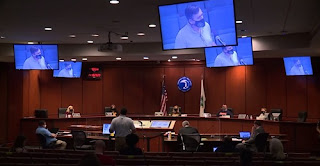7 Questions: Are you ready?
It seems too common that day 1 “launch day” becomes a tangle of confusion and unexpected complications. These can hurt a business in erosion of confidence, not to mention the direct investment in setting things right. Unfortunately, many businesses do not take the time to prevent this chaos by ensuring Operational readiness before that fateful day.
Operational readiness has a dozen definitions across a wide variety of environments, from Military, State, Corporate, Facilities to Information technology. I believe that, regardless of the environment there are some key questions that a good Operational Readiness effort should answer.
What You Have: This is your inventory. While we may be tempted to assume we have this in hand, an inventory is not as simple as the hardware directly tied into your solution. If you are “ready” it means that you know exactly what is at your disposal. This is a full catalog of your physical and your human resources.
Physical inventory is easy enough, though it is surprising how often I have seen glaring gaps in this. I think this is one of the common misconceptions we see when Hollywood depicts tech. They seem to think we have detailed wire-frame drawings of every computer system with complete layouts all sitting in a beautiful 3d Render. In reality, a hasty Visio drawing with out of date reference data is often the best we can hope for. Somewhere in between these worlds is where we need to be.
Knowing what physical elements make up your system was a key step in design, and if you maintain that data through your lights-on life, it will save hours of discovery down the road. Knowing the flow, how the parts all fit together, will make linear troubleshooting much easier.
In addition, it is important to know what else is available. Are replacements available, on site? Is there a similar non-critical system nearby that can provide parts? How long will it take to replace these elements?
Often overlooked, but, potentially, just as important is an inventory of the people around you. Do you know who you can reach out to for assistance? What are their talents?
I always carry a pencil and paper notebook with me in my career. Writing things down helps me visualize and lock away information. In the back of every notebook for every job, I have preserved an “Atlas List.” which is a list of who I work best with in any given expertise. If I need assistance in network security for example, I have the expert on my list and at my fingertips. Building this list is one of my first goals when taking on a new project. In this way I have an inventory of the people around me and what they can do. When you have a complete inventory, you may find that your solution is just sitting there on a shelf or in a chair, waiting for you.
What You say: Are you all speaking the same language? This can be especially challenging when you have various lines of business working together. Various lines of business may have the same name for completely different items. If you are not careful, you may find yourself having to distribute “decoder sheets” to help people decypher conflicting names. I have seen call center agents with sheets defining applications by term and region the caller is from. Aliases can be especially challenging. As solutions evolve, the name of the system may change but the culture is not as moveable. A Clear definition of key terms, an understanding of naming strategy and catalogue of Aliases used can spare you hours of confusion.
How you say it: What is your communication strategy? I have seen technical masterpieces of innovation and dedication be derided as abject failures because the messaging was off. Your communication strategy should be designed to tell stakeholders what they need to know when they need to know it with little risk of contradiction. When in doubt, “One Voice”
What you begin: If you are launching a system, how will new elements be added to that system? What guarantees that these new elements meet the Operational readiness standards you already have in place?
What you do: What is your day to day Standard procedure? How are you maintaining the solution? What controls are in place to control changes, and keep things current?
How you react: Do you have a clear and robust incident/crisis management strategy in place? When things go wrong, the last thing you need to waste time on is figuring out a process to START working on recovery. Better to have that process in place so you can “Fail into it”
How do you Rate: What does success look like? How are you going to know that things are going well? How will you judge future progress?
Each one of these questions is likely worth volumes of discussion. Each business or environment will have different ways to answer many of these questions, the important thing is that they are asked and clearly answered.



Play blackjack for fun with greater than 35 free blackjack video games on this page. Play variants like double publicity and multi hand blackjack immediately. Gives you many 우리카지노 paylines to work with across multiple of} units of reels. If you or a family member or pal shows these indicators, we encourage you to hunt an expert opinion. A psychologist or doctor can decide a prognosis and help the player by way of the following steps.
ReplyDelete